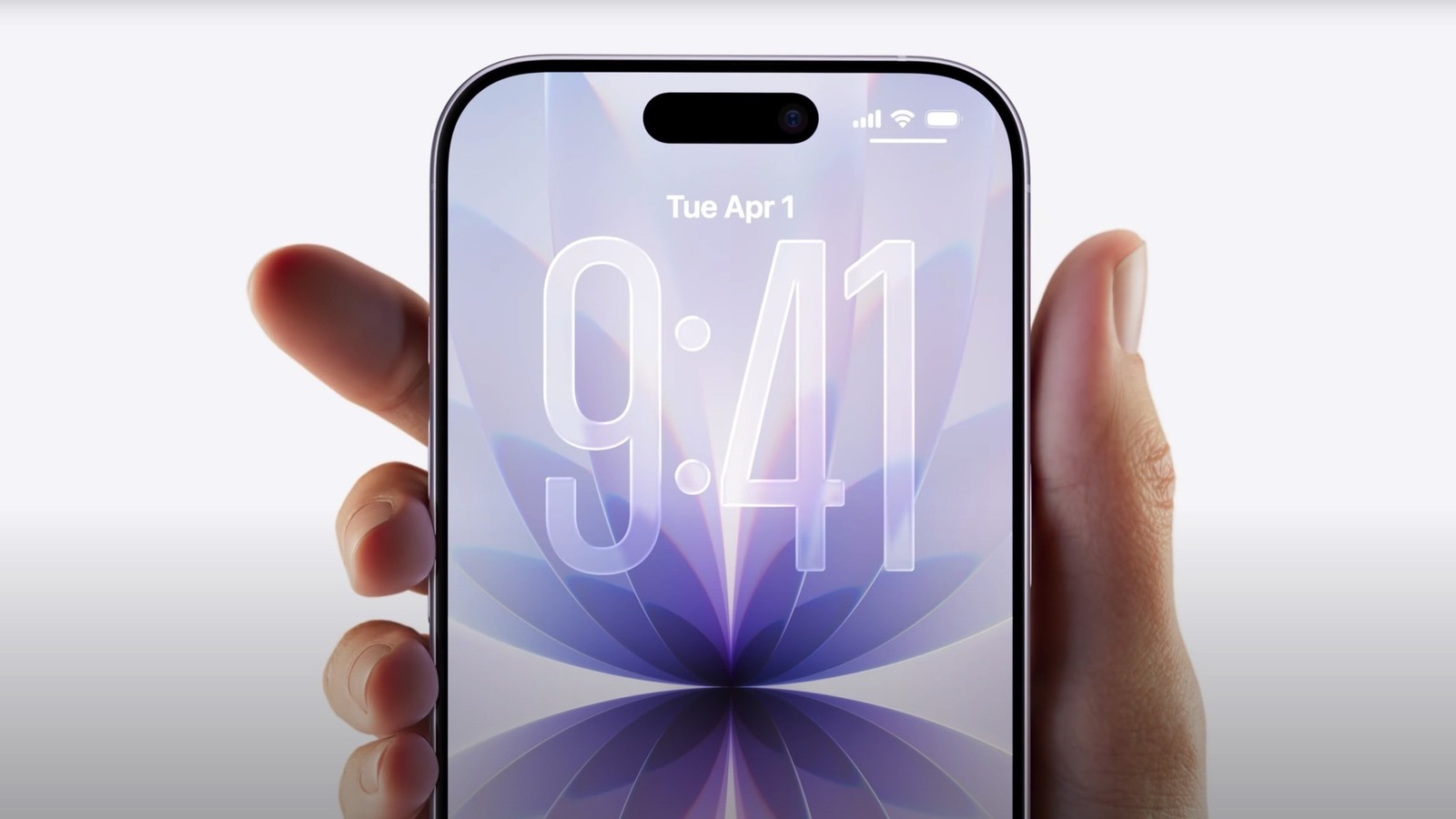APPLE’S first-ever folding iPhone may be just one year away – with a stunningly high price tag.
That’s the prediction from a top industry expert who says that the Californian tech giant is nearly ready to show off the flip-in-half gadget.
4

4
Folding phones aren’t exactly a new idea: millions toted the clamshell Motorola Razr back in the noughties.
In recent years, gadget titans have used folding designs as a way to fit bigger screens to pocket-sized devices.
Google’s Pixel 9 Pro Fold and Samsung’s Galaxy Fold series have tablet-sized screens, but flip in half to a more manageable size.
Now long-time industry analyst Ming-Chi Kuo reckons Apple is ready to join the fray next year with a folding iPhone.
“Recent market rumours suggest Apple has placed an order for 15 to 20 million foldable iPhones,” Kuo, of TF Securities, said.
“Based on checks across multiple components, this volume likely reflects cumulative demand over the products 2-3 year lifecycle, rather than 2026 alone.”
He said that he expects the foldable iPhone “to enter mass production” in the second half of 2026.
And would ship several million units a year, including in 2027 and 2028.
This echoes an earlier report by The Information that said the foldable iPhone could land as soon as 2026, and that it has an internal codename of “the V68”.
And earlier this year, it was reported that it would be the first foldable smartphone to avoid having a “crease” on the screen.
The screen itself is reportedly being built by Samsung Display, which has provided Apple with iPhone screens for years.
Earlier this year, Kuo predicted that the handset would have a 7.-inch screen on the inside and a 5.5-inch display on the outside.
And it would reportedly retail at between $2,000 and $2,500 – that’s more like £1,500 to £1,850, but based on current Apple gadget pricing, you’d expect to see £2,000 to £2,500 as UK mark-ups include tax.
If the handset is due out in 2026, we’d expect it to launch in September alongside the expected iPhone 18.
However, Apple hasn’t confirmed any plans to launch a foldable iPhone.
In fact, the company hasn’t even detailed plans for its iPhone 17, which we’re expecting to arrive in a matter of months.

4
But Apple is playing catch-up when it comes to foldable phones.
The first true foldable launched back in late 2018 with Chinese start-up Royole’s Flexpai.
Foldable phones became more of a mainstream topic with the launch of the Samsung Galaxy Fold in 2019.
And since then, Huawei, Motorola, Google, and Vivo have all built their own foldable handsets.
DO WE NEED A FOLDABLE IPHONE?

Here’s what The Sun’s tech editor Sean Keach has to say…
How badly do you want a foldable phone? Unless you’re a tech geek, you probably never even think about it.
I am a tech geek – and I hardly give it thought.
Of course, foldable phones are a good idea if perfectly executed.
After all, there’s nothing wrong with wanting a phone that can have both a regular screen and giant one too – but still fit in your pocket.
The problem is that there are so many trade-offs.
You’ll have to deal with a big old crease down the middle of the screen.
And foldable phones so often end up very thick, or long, or both.
That’s not to mention the price of foldable phones, which often cost hundreds more than their regular counterparts.
Wallets are strained under the growing cost of life, not to mention tech and subscriptions – so new gadgets needs to feel very useful to justify forking out extra.
So until a company can resolve at least some of these problems with foldable phones, they’ll struggle to reach the mainstream in the way that regular phones have.
Apple is often brilliant at making things catch on, even if it’s not always first across the line.
And if Apple can solve at least the creasing issue – and maybe the thickness problem too – then it could make foldable phones more desirable.
Maybe I’ll finally be converted.
For now, I’m sticking with tapping my flat slab of metal and glass.
The idea is that smartphone designs currently limit the size of a screen.
Ultimately, you end up creating a tablet if you go much farther than the iPhone 16 Pro Max (with a 6.9-inch panel).
But mobile devices are great for watching telly and playing games, so having a good screen is important.
So by creating a foldable phone, you can offer a big screen – while still keeping the device pocketable.

4
IPHONE SCREEN SIZES – A JOURNEY THROUGH TIME

Here’s how iPhone screen sizes have changed over the years – as measured in inches diagonally from corner to corner…
- iPhone (2007) – 3.5 inches
- iPhone 3G (2008) – 3.5 inches
- iPhone 3GS (2009) – 3.5 inches
- iPhone 4 (2010) – 3.5 inches
- iPhone 4S (2011) – 3.5 inches
- iPhone 5 (2012) – 4 inches
- iPhone 5S (2013) – 4 inches
- iPhone 5C (2013) – 4 inches
- iPhone 6 (2014) – 4.7 inches
- iPhone 6+ (2014) – 5.5 inches
- iPhone 6S (2015) – 4.7 inches
- iPhone 6S+ (2015) – 5.5 inches
- iPhone SE (2016) – 4 inches
- iPhone 7 (2016) – 4.7 inches
- iPhone 7+ (2016) – 5.5 inches
- iPhone 8 (2017) – 4.7 inches
- iPhone 8+ (2017) – 5.5 inches
- iPhone X (2017) – 5.8 inches
- iPhone XS (2018) – 5.8 inches
- iPhone XR (2018) – 6.1 inches
- iPhone XS Max (2018) – 6.5 inches
- iPhone 11 (2019) – 6.1 inches
- iPhone 11 Pro (2019) – 5.8 inches
- iPhone 11 Pro Max (2019) – 6.5 inches
- iPhone SE 2nd gen (2020) – 4.7 inches
- iPhone 12 Mini (2020) – 5.4 inches
- iPhone 12 (2020) – 6.1 inches
- iPhone 12 Pro (2020) – 6.1 inches
- iPhone 12 Pro Max (2020) – 6.7 inches
- iPhone 13 Mini (2021) – 5.4 inches
- iPhone 13 (2021) – 6.1 inches
- iPhone 13 Pro (2021) – 6.1 inches
- iPhone 13 Pro Max (2021) – 6.7 inches
- iPhone SE 3rd gen (2022) – 4.7 inches
- iPhone 14 (2022) – 6.1 inches
- iPhone 14 Plus (2022) – 6.7 inches
- iPhone 14 Pro (2022) – 6.1 inches
- iPhone 14 Pro Max (2022) – 6.7 inches
- iPhone 15 (2023) – 6.1 inches
- iPhone 15 Plus (2023) – 6.7 inches
- iPhone 15 Pro (2023) – 6.1 inches
- iPhone 15 Pro Max (2023) – 6.7 inches
- iPhone 16 (2024) – 6.1 inches
- iPhone 16 Plus (2024) – 6.7 inches
- iPhone 16 Pro (2024) – 6.3 inches
- iPhone 16 Pro Max (2024) – 6.9 inches
- iPhone 16e (2025) – 6.1 inches
Picture Credit: Apple / The Sun









